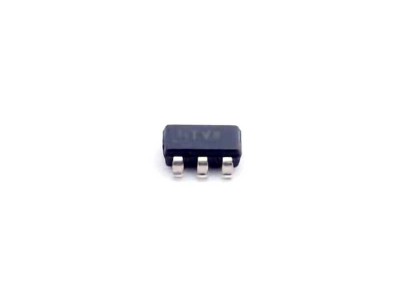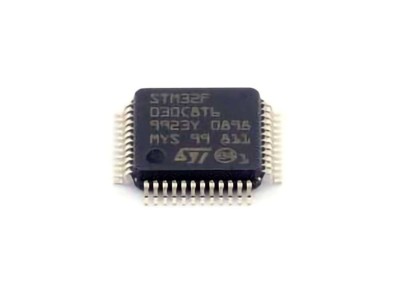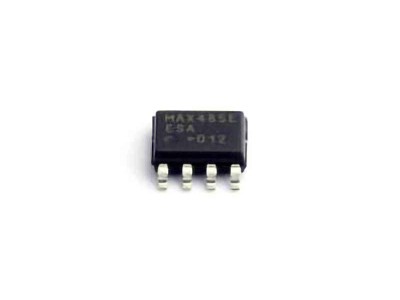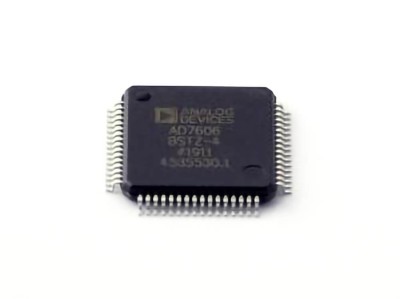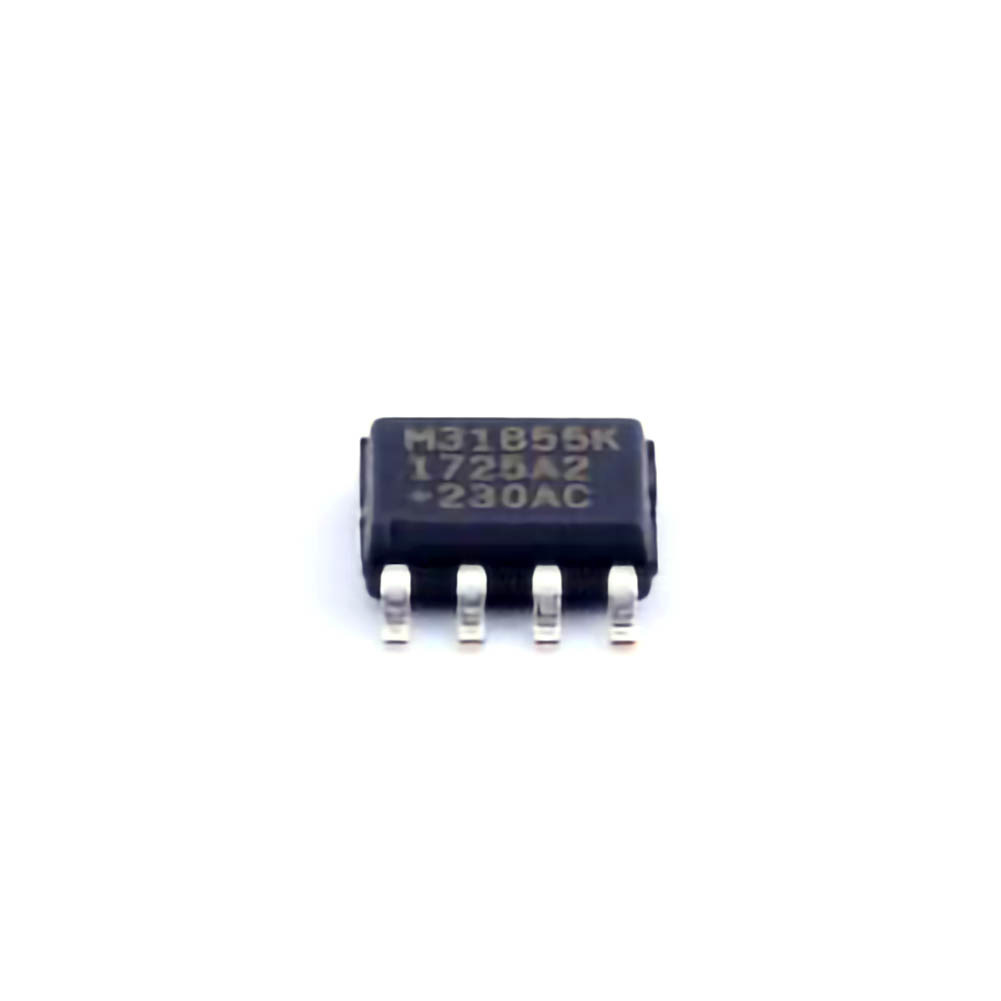
The ADI MAX31855KASA+T thermocouple-to-digital converter is widely used in various industrial and commercial applications for measuring temperatures with high precision. However, like all electronic components, it may encounter issues that could affect its performance. This article dives into common troubleshooting tips and solutions to help users resolve any issues with the MAX31855KASA+T module effectively.
MAX31855KASA+T, troubleshooting, thermocouple, digital converter, temperature measurement, sensor calibration, SPI Communication , temperature sensor issues, industrial temperature sensor.
Common Issues and Troubleshooting Steps for MAX31855KASA+T
The MAX31855KASA+T is a versatile thermocouple-to-digital converter from Maxim Integrated. It is designed to convert the small voltage signal generated by thermocouples into a usable digital value, which can be interpreted by microcontrollers or other digital systems. Despite its robust design, users may face issues during installation or operation. This article covers the most common issues and how to resolve them.
1. Incorrect Temperature Readings
One of the most common problems users encounter with the MAX31855KASA+T is inaccurate or fluctuating temperature readings. Several factors can cause this issue:
a. Incorrect Thermocouple Connection
The MAX31855KASA+T is designed to work with K-type thermocouples. If the thermocouple is not connected correctly, it will not generate the proper voltage signals for accurate temperature conversion. To avoid this:
Ensure the positive and negative terminals of the thermocouple are correctly connected to the input pins of the MAX31855KASA+T.
Confirm that the thermocouple leads are not damaged and are made of the correct materials for the application (e.g., K-type thermocouple wire).
b. Improper Cold-Junction Compensation
The MAX31855KASA+T has built-in cold-junction compensation, but if the module is not properly shielded from temperature fluctuations in its environment, the readings could be inaccurate. Cold-junction compensation corrects for the ambient temperature at the connection point, but improper placement can lead to incorrect calculations.
To solve this, ensure that the MAX31855KASA+T is installed in a stable environment away from direct heat sources or cold air drafts. A well-controlled room temperature will help ensure accurate readings.
c. Power Supply Issues
Another common cause of incorrect readings is an unstable or incorrect power supply. The MAX31855KASA+T requires a 3.3V to 5V power supply for proper operation. Fluctuations or inadequate power can cause the module to behave unpredictably.
Make sure the power supply is stable, and avoid using long wires that could cause voltage drops. If possible, use a regulated power supply to ensure the module gets a consistent voltage.
d. Faulty or Uncalibrated Thermocouple
A faulty thermocouple or an uncalibrated one can lead to incorrect temperature readings. While thermocouples are typically very reliable, they can degrade over time or become damaged, especially in harsh environments. If you suspect the thermocouple is faulty, try replacing it with a known good one and observe if the problem persists.
In case of a new thermocouple, calibration might be necessary to ensure that it operates correctly. Check the thermocouple manufacturer’s guidelines for calibration steps.
2. SPI Communication Issues
The MAX31855KASA+T communicates with microcontrollers using the SPI (Serial Peripheral interface ) protocol. If you are experiencing problems with data transmission or communication errors, there may be issues with the SPI connection.
a. Incorrect Wiring of SPI Pins
The MAX31855KASA+T uses several SPI pins for communication, including:
VDD (Power)
GND (Ground)
SCK ( Clock )
CS (Chip Select)
MISO (Master In Slave Out)
Ensure that all connections are correct and secure. Miswiring any of the pins can lead to data transmission failures or incorrect readings.
b. Incompatible SPI Clock Speed
The MAX31855KASA+T has specific requirements for the SPI clock speed. If the clock speed set on your microcontroller is too fast or too slow, the module may fail to respond correctly. The recommended SPI clock speed is typically 1 MHz, but you should check the datasheet of your specific MAX31855KASA+T module for details.
To resolve this issue, adjust the clock speed on your microcontroller's SPI interface to match the requirements of the MAX31855KASA+T.
c. Improper Chip Select Pin Handling
The Chip Select (CS) pin controls whether the MAX31855KASA+T is actively communicating with the microcontroller. If this pin is not correctly managed (i.e., not properly toggled between active and inactive states), communication can fail.
Make sure that the CS pin is properly asserted (pulled low) before initiating communication and deasserted (pulled high) once communication is complete.
d. No Data or Corrupted Data
If you are getting no data or corrupted data on the MISO line, there may be issues with the wiring or SPI configuration. In some cases, noise or interference on the communication lines can corrupt the data. To troubleshoot:
Check the connections and ensure that no wires are loose or shorted.
Try using shorter wires to minimize the chances of data corruption.
Add pull-up resistors to the SPI lines if needed to ensure proper signal integrity.
3. Overheating of the Module
The MAX31855KASA+T has built-in protection against overheating, but if the module is exposed to high ambient temperatures, it may begin to malfunction or provide inaccurate readings. Overheating can occur due to poor ventilation, incorrect placement, or over-voltage conditions.
a. Environment Control
To ensure the module operates within its specified temperature range, install the MAX31855KASA+T in a well-ventilated enclosure. Avoid placing it near heat sources or within areas that experience temperature spikes. Additionally, monitor the ambient temperature to ensure it stays within the range specified by the manufacturer.
b. Adequate Heat Dissipation
If you're using the MAX31855KASA+T in a high-temperature application, you may need additional heat dissipation measures, such as a heat sink or a cooling fan, to prevent the module from overheating. This is particularly important in environments with fluctuating or extreme temperatures.
4. Interference from External Sources
The MAX31855KASA+T is sensitive to electromagnetic interference ( EMI ), which can corrupt the temperature readings. To minimize interference:
a. Shielding and Grounding
Consider using shielded cables for the thermocouple connections and SPI lines. Proper grounding of the system can also reduce the chances of EMI affecting the module.
b. Avoid Long Wires
Using excessively long wires can act as antenna s, picking up electromagnetic interference. Keep the wiring between the thermocouple, MAX31855KASA+T, and the microcontroller as short as possible.
Advanced Troubleshooting and Maintenance for MAX31855KASA+T
5. Software Errors and Misconfigurations
When dealing with the MAX31855KASA+T, software configuration issues can often be the root cause of many problems. To ensure that the software is functioning properly:
a. Check SPI Communication Protocol
If your software is not correctly handling the SPI communication, data transmission can fail. Review the microcontroller’s datasheet and MAX31855KASA+T documentation to ensure the communication protocol is correctly implemented.
Additionally, ensure that the data format from the MAX31855KASA+T is properly parsed. The module provides a 32-bit data stream, with the temperature data embedded in it. Ensure your software is correctly extracting the temperature information from the data stream.
b. Library and Driver Compatibility
Some users may face issues when using third-party libraries or drivers for the MAX31855KASA+T. It's essential to use libraries that are specifically designed for the MAX31855KASA+T or compatible with the microcontroller you are using.
To troubleshoot, first check the library documentation for potential updates or known issues. If using an open-source library, check the repository for any community-reported issues or fixes.
c. Test with Simple Example Code
If you're encountering persistent issues, simplify your setup and test the module with basic example code. This can help isolate whether the problem lies in the hardware or the software configuration.
6. Module Faults and Replacement
In some cases, the MAX31855KASA+T module itself may be defective or damaged. If none of the above troubleshooting steps resolves your issue, it may be time to replace the module. Before replacing the module:
Ensure that all other components in the system (e.g., thermocouple, microcontroller, wiring) are working correctly.
Test the new module in a known good setup to rule out other potential problems.
7. Best Practices for Long-Term Use
To avoid future issues with the MAX31855KASA+T, consider the following best practices:
a. Regular Calibration and Maintenance
Even though the MAX31855KASA+T is designed for long-term accuracy, it’s always a good idea to periodically calibrate the system, especially if it is used in demanding industrial applications. Regular maintenance checks, including cleaning the thermocouple connections, can help prevent issues from arising.
b. Environmental Monitoring
Regularly monitor the environmental conditions where the MAX31855KASA+T operates. Temperature fluctuations, humidity, and exposure to harsh conditions can all affect the module’s performance. Keeping track of these variables and making adjustments as needed can help extend the life of your temperature measurement system.
Conclusion:
The MAX31855KASA+T is a reliable and precise thermocouple-to-digital converter, but like any piece of electronic equipment, it is prone to issues. By following the troubleshooting steps outlined in this article, you can quickly identify and resolve common problems with the module, ensuring that your temperature measurement system remains accurate and efficient. With careful attention to hardware connections, software configuration, and environmental factors, you can avoid most common pitfalls and maximize the lifespan of your MAX31855KASA+T.
If you're looking for models of commonly used electronic components or more information about MAX31855KASA+T datasheets, compile all your procurement and CAD information in one place.
(Partnering with an electronic component supplier) sets your team up for success, ensuring that the design, production and procurement processes are streamlined and error-free. (Contact us) for free today
